What Temperature Will Kill Pansies: Understanding the Temperature Tolerance
Introduction
Pansies (Viola × wittrockiana) are cherished by gardeners for their vibrant blooms, which can brighten up any garden with an array of colors, from deep purples to sunny yellows and every shade in between. These hardy, yet delicate flowers have a unique charm and versatility that make them a popular choice for both amateur and seasoned gardeners. However, as with any plant, pansies have specific environmental needs, particularly when it comes to temperature. Understanding what temperature will kill pansies is crucial for maintaining their health and ensuring that they continue to thrive in your garden.
Pansies: A Brief Overview
Pansies, a hybrid plant developed from species in the Viola genus, are renowned for their large, vibrant flowers that come in an array of colors, including purple, yellow, blue, red, and white. These flowers are typically grown as annuals or biennials, although they can sometimes be treated as perennials in regions with mild winters. Pansies are relatively easy to grow and are often used to add color to gardens during cooler months when many other plants are dormant.
What Temperature Will Kill Pansies?
The survival of pansies is closely tied to the temperature of their environment. While they are more cold-tolerant than many other garden plants, there is a limit to their ability to withstand low temperatures. Similarly, pansies struggle in excessively high temperatures. Understanding what temperature will kill pansies is crucial for gardeners looking to maintain healthy, thriving plants.
Ideal Growing Conditions for Pansies
Before diving into the temperature extremes that can kill pansies, it is important to understand the ideal conditions in which these plants thrive. Pansies prefer cool, moist environments and are most productive when temperatures range between 45°F and 65°F (7°C to 18°C). They thrive in full to partial sun, well-drained soil, and benefit from consistent watering to keep the soil moist but not waterlogged.
Pansies are known for their ability to tolerate light frost, which makes them an excellent choice for early spring and fall gardens in many regions. However, while they can handle cooler temperatures, extreme cold or heat can be detrimental to their survival.
How Cold Temperatures Will Kill Pansies
Pansies are celebrated for their cold tolerance, but there are limits to how low the temperature can drop before they suffer significant damage or death. Understanding what temperature will kill pansies in cold conditions is essential for gardeners, especially in regions prone to frost and freezing temperatures.
Frost and Freezing Temperatures: A Delicate Balance
Pansies can generally survive light frost, with temperatures as low as 25°F (-4°C) often not being fatal, particularly if the cold spell is brief. However, if temperatures drop further or remain low for an extended period, pansies may suffer severe damage or death.
When exposed to frost, the water inside the plant’s cells can freeze, causing the cells to rupture. This cellular damage leads to blackened leaves, wilted stems, and in severe cases, the death of the plant. Additionally, if the soil freezes, the roots can become damaged, further compromising the plant’s ability to absorb water and nutrients, which can be fatal.
Sub-Freezing Temperatures: The Point of No Return
Sub-freezing temperatures, typically defined as temperatures below 32°F (0°C), pose a significant threat to pansies. While a brief dip into sub-freezing temperatures may cause only minor damage, prolonged exposure can be fatal. When temperatures fall below 20°F (-6°C), pansies are at significant risk of death, especially during hard freezes.
A hard freeze, which occurs when temperatures remain below 28°F (-2°C) for several hours or more, can be particularly devastating. In such conditions, the plant’s tissues can become irreparably damaged, leading to death. Therefore, understanding what temperature will kill pansies in a hard freeze is crucial for protecting these delicate plants.
Winter Survival of Pansies: A Seasonal Challenge
In regions with mild winters, pansies can often survive through the winter and bloom again in early spring. However, in colder climates, where temperatures regularly drop below freezing, pansies may need additional protection to survive. Mulching, using frost cloths, and planting pansies in sheltered locations can help mitigate the effects of cold temperatures and increase the likelihood of winter survival.
How High Temperatures Will Kill Pansies
While pansies are known for their cold tolerance, they are less equipped to handle high temperatures. Excessive heat can cause a range of problems for pansies, from wilting and reduced flowering to death. Understanding what temperature will kill pansies in hot weather is essential for maintaining healthy plants during the warmer months.
Heat Stress: The Silent Killer
Pansies prefer cool weather and can begin to show signs of stress when temperatures consistently rise above 70°F (21°C). As temperatures approach 80°F (27°C) or higher, pansies may start to wilt, even if they receive adequate water. This wilting occurs because high temperatures increase the rate of evaporation from the soil and the plant’s leaves, leading to water loss faster than the plant can absorb it.
In extreme cases, heat stress can cause the leaves to scorch and turn brown, and the flowers may fade prematurely. If high temperatures persist, the overall health of the plant can decline, and it may eventually die. Understanding what temperature will kill pansies due to heat stress is key to preventing this silent killer from taking hold.
Soil Temperature and Root Health: A Hidden Danger
High air temperatures are not the only concern for pansies; soil temperature also plays a critical role in their survival. Pansies have shallow root systems that are vulnerable to temperature fluctuations. When soil temperatures rise above 75°F (24°C), the roots may struggle to function properly, leading to reduced water and nutrient uptake.
Prolonged exposure to hot soil can damage the roots, causing the plant to wilt and die. This is particularly a concern for pansies planted in containers, where the soil temperature can rise more quickly than in garden beds. Understanding what temperature will kill pansies due to root damage is essential for maintaining healthy plants in hot weather.
Sun Exposure: The Double-Edged Sword
Pansies prefer full sun in cooler climates, but in warmer regions, too much direct sunlight can exacerbate heat stress. The intense sun can cause the soil to dry out quickly, leading to dehydration and heat damage. In extreme cases, the leaves may become sunburned, with brown, crispy edges, and the flowers may wither and drop.
To protect pansies from excessive heat, it is advisable to plant them in locations where they receive morning sun and afternoon shade, particularly in warmer climates. This helps to reduce the impact of the hottest part of the day and prevent temperatures that will kill pansies.
Critical Temperature Thresholds: When Will Pansies Die?
Given the information above, we can summarize the critical temperature thresholds that may lead to the death of pansies. Understanding these thresholds is crucial for gardeners looking to protect their plants from temperature extremes.
- Below 25°F (-4°C): Pansies may experience frost damage, with the risk of death increasing as temperatures drop further.
- Below 20°F (-6°C): Prolonged exposure to temperatures at or below this level can be fatal, particularly during hard freezes.
- Above 75°F (24°C): Soil temperatures above this threshold can stress the roots, leading to reduced plant health and potential death.
- Above 80°F (27°C): Air temperatures above this level can cause heat stress, wilting, and potentially death if the heat persists.
These critical temperature thresholds are general guidelines. The actual temperature at which pansies will die can vary depending on several factors, including the duration of exposure, plant maturity, and environmental conditions.
Factors Influencing Pansy Survival in Extreme Temperatures
While understanding what temperature will kill pansies is important, several factors can influence their survival in extreme temperatures. These factors include the duration of exposure, plant maturity, soil and mulch conditions, and the presence of microclimates.
1. Duration of Exposure: Time Matters
The length of time pansies are exposed to extreme temperatures plays a significant role in determining their survival. A brief dip into freezing or scorching temperatures may cause temporary damage, but prolonged exposure increases the likelihood of permanent harm or death.
For example, a light frost overnight may cause minor damage to pansies, but if the temperature remains below freezing for several days, the plants are more likely to die. Similarly, a short heatwave may stress pansies, but a prolonged period of high temperatures can be fatal.
2. Plant Maturity: Age and Resilience
Mature pansies with well-established root systems are generally more resilient to temperature extremes than young seedlings. Mature plants have greater energy reserves and are better equipped to recover from damage. However, even mature pansies have limits to their tolerance.
Young pansies, especially those recently transplanted, are more vulnerable to temperature stress. Their roots may not be fully established, making them less able to absorb water and nutrients during extreme conditions. Understanding the role of plant maturity in determining what temperature will kill pansies is essential for gardeners.
3. Soil and Mulch: The Protective Layer
The type of soil and the use of mulch can influence how well pansies withstand extreme temperatures. Well-drained soil helps prevent waterlogged conditions that can exacerbate cold stress, while mulch acts as an insulator, helping to regulate soil temperature and moisture levels.
In colder climates, applying a layer of mulch around pansies before the onset of winter can protect the roots from freezing temperatures. In warmer climates, mulch helps to keep the soil cool and retain moisture, reducing the impact of heat stress. Understanding the importance of soil and mulch in preventing temperatures that will kill pansies is crucial for successful gardening.
4. Microclimates: The Local Environment
Microclimates, or small areas with slightly different environmental conditions than the surrounding area, can affect how pansies respond to temperature extremes. For example, pansies planted near a building or wall may benefit from the heat retained by the structure, providing some protection during cold spells.
Conversely, pansies planted in low-lying areas where cold air settles may be more prone to frost damage. Similarly, locations with limited airflow may experience higher temperatures, increasing the risk of heat stress. Understanding how microclimates influence what temperature will kill pansies can help gardeners choose the best planting locations.
Protecting Pansies from Temperature Extremes
Given the temperature sensitivities of pansies, gardeners must take proactive measures to protect them from fatal temperature extremes. Understanding what temperature will kill pansies is the first step, but knowing how to mitigate these risks is equally important.
1. Frost Protection: Shielding from the Cold
To protect pansies from frost and freezing temperatures:
- Mulch: Apply a layer of mulch around the base of the plants to insulate the roots and retain soil warmth. Mulch can be particularly effective in preventing the ground from freezing and damaging the roots.
- Frost Cloths: Cover pansies with frost cloths, blankets, or burlap when frost is forecasted. Remove the coverings during the day to allow sunlight and airflow, but ensure they are securely in place during the night to trap warmth.
- Watering: Water the soil around pansies before a frost event. Moist soil retains heat better than dry soil, providing some protection to the roots. However, avoid watering directly on the foliage to prevent ice formation.
- Sheltered Locations: Plant pansies in locations that are protected from cold winds, such as near buildings or fences. These areas may retain heat and offer a slight buffer against temperature drops.
2. Heat Protection: Defending Against the Sun
To protect pansies from high temperatures:
- Shade: Provide shade during the hottest part of the day by using shade cloths or planting pansies in areas that receive morning sun and afternoon shade. This reduces the direct exposure to intense sunlight and helps keep temperatures lower.
- Mulch: Use mulch to keep the soil cool and retain moisture, reducing the impact of heat stress on the roots. Organic mulches like straw or wood chips are particularly effective at maintaining consistent soil temperatures.
- Watering: Water pansies regularly, especially during hot weather. Water early in the morning or late in the evening to minimize evaporation. Deep watering encourages roots to grow deeper, where the soil remains cooler.
- Container Placement: If pansies are grown in containers, move them to a cooler, shaded location during extreme heat. Containers can heat up quickly, so placing them on a cool surface like gravel or a shaded patio can help prevent root damage.
Conclusion
Pansies are a delightful addition to any garden, offering vibrant color and resilience in cooler weather. However, understanding what temperature will kill pansies is essential for ensuring their survival through the seasons. Whether facing the cold of winter or the heat of summer, gardeners must be vigilant in protecting their pansies from temperature extremes.
By recognizing the critical temperature thresholds that can harm or kill pansies and implementing strategies such as mulching, providing shade, and using frost cloths, gardeners can create an environment where pansies can thrive. The key to success lies in understanding the unique needs of pansies and taking proactive steps to shield them from the temperatures that threaten their survival.
Ultimately, with the right care and attention, pansies can continue to bring joy and color to gardens, even in the face of challenging weather conditions. Whether you are a seasoned gardener or a beginner, knowing what temperature will kill pansies and how to prevent it is a valuable skill that will help you enjoy these beautiful flowers for many seasons to come.


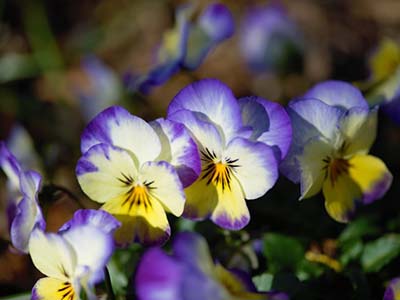
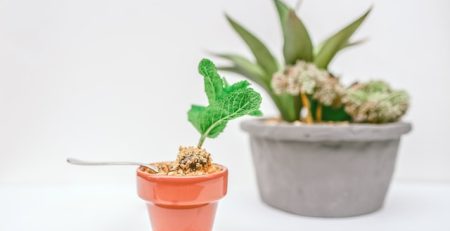
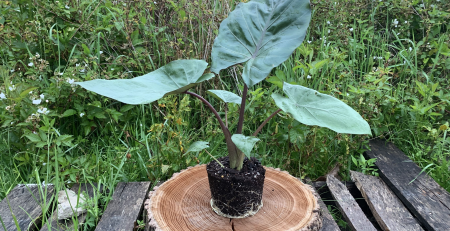

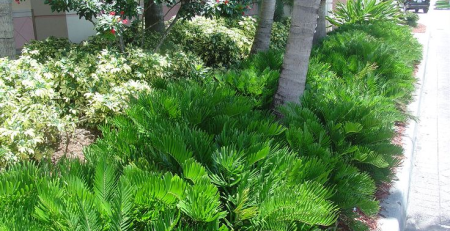

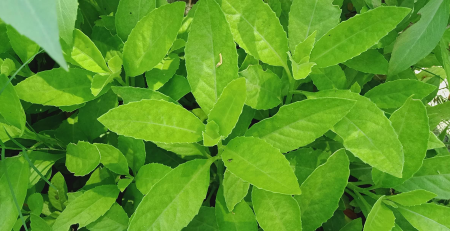


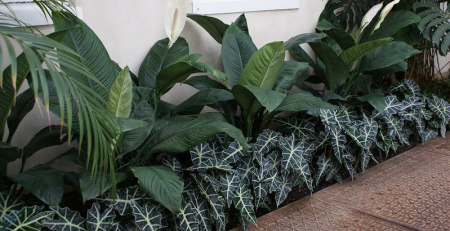

Leave a Reply